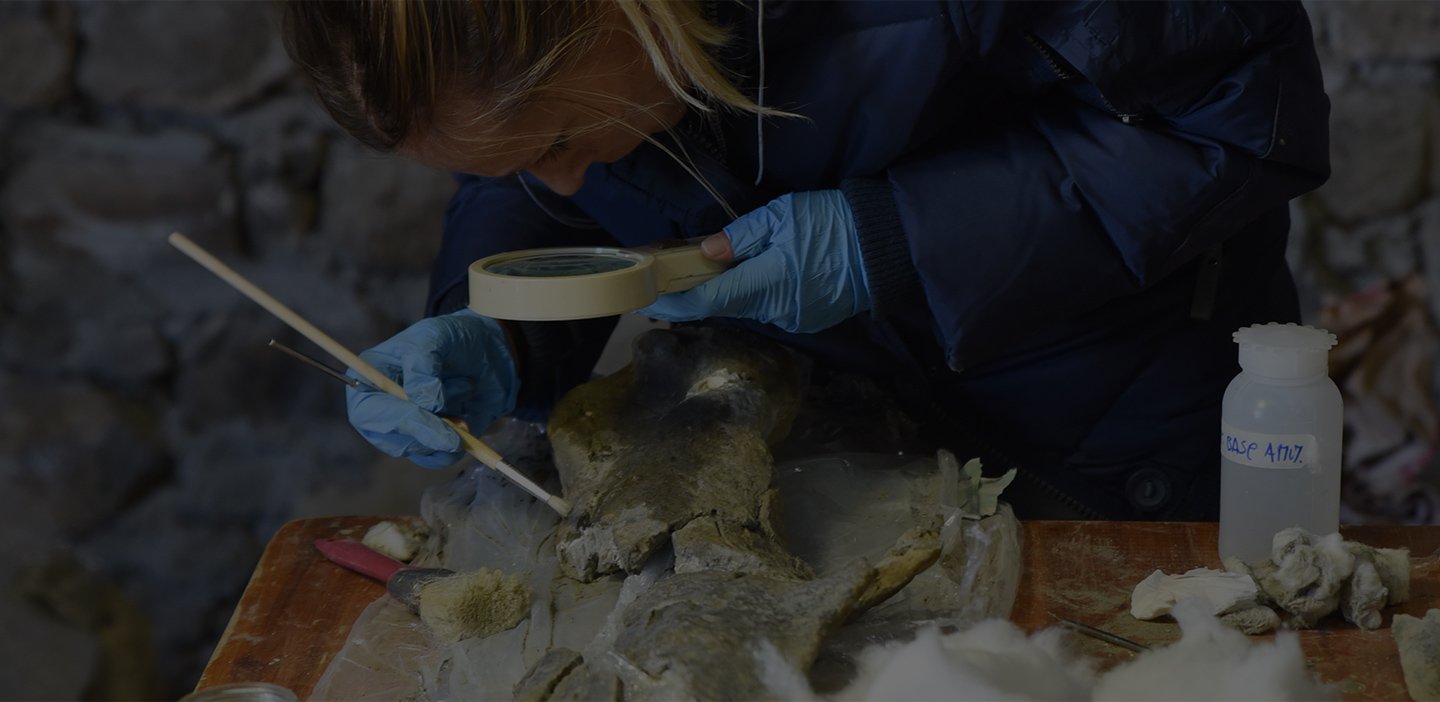
The bones of Brunella were removed together with blocks of sediment and for almost ten years remained locked in plaster casings, reinforced with metal pipes and wooden boards. The opening of the plaster casings revealed the presence of fractures in the blocks and bones, caused by the variations of the natural environment (temperature and humidity) that occurred during storage. The fossil bones, which had been embedded in the sediment for several million years, found themselves in a new environment characterized by continuous changes and, for this reason, began to deteriorate. The video of the opening of the case containing the right mandibular branch shows that the fractures are constantly controlled, classified and managed in order to save the fossil bones.
The activities involve the micro-excavation of the bone in the bed of shells on which it rests and the application of a special consolidating agent. To do so, chemicals are applied to facilitate the removal of sediment and precision tools, such as probes, are used to work on the sediment without damaging the bone and the shells. Once the anatomical structures of the skeleton have been completely identified, the consolidating agent is applied, which penetrates the fossil, making it firm and resistant to changes in temperature and humidity.
The sediment that is removed during these operations is not discarded, but sieved after careful washing in order to eliminate the sand and clay components to allow the identification of microfossils, such as calcareous nannoplankton, foranminifera, remains of fish and invertebrates, such as mollusks and sea urchins.